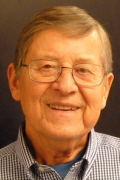Difference between revisions of "Template:Westarctica.wiki:Today's featured article"
Westarctica (talk | contribs) |
Westarctica (talk | contribs) |
||
| (186 intermediate revisions by the same user not shown) | |||
| Line 1: | Line 1: | ||
[[File: | [[File:Wesley LeMasurier.png|250px|left]] | ||
'''[[Wesley E. LeMasurier]]''' is an igneous petrologist/volcanologist who specializes in the study of Cenozoic volcanoes in the [[Marie Byrd Land]] region of [[Antarctica]]. He was responsible for geological research around many of [[Westarctica]]'s volcanic mountains. [[Mount LeMasurier]] was named in his honor. | |||
Dr. LeMasurier's work includes studying the origin and evolution of Cenozoic volcanic rocks, the nature of the tectonic environment of volcanism, and the volcanic record of glacial history. In 1990, after conducting a survey of [[Mount Berlin]], he declared the volcano to be "potentially active." Later, in 1994, during field work around [[Mount Siple]], Dr. LeMasurier knocked off a piece of rock from the mountain and sent it to Ruth Siple, the widow of [[Paul A. Siple]], for whom the mountain was named. | |||
'''([[Wesley E. LeMasurier|Full Article...]])''' | |||
'''([[ | |||
Latest revision as of 16:11, 17 October 2025
Wesley E. LeMasurier is an igneous petrologist/volcanologist who specializes in the study of Cenozoic volcanoes in the Marie Byrd Land region of Antarctica. He was responsible for geological research around many of Westarctica's volcanic mountains. Mount LeMasurier was named in his honor.
Dr. LeMasurier's work includes studying the origin and evolution of Cenozoic volcanic rocks, the nature of the tectonic environment of volcanism, and the volcanic record of glacial history. In 1990, after conducting a survey of Mount Berlin, he declared the volcano to be "potentially active." Later, in 1994, during field work around Mount Siple, Dr. LeMasurier knocked off a piece of rock from the mountain and sent it to Ruth Siple, the widow of Paul A. Siple, for whom the mountain was named.
